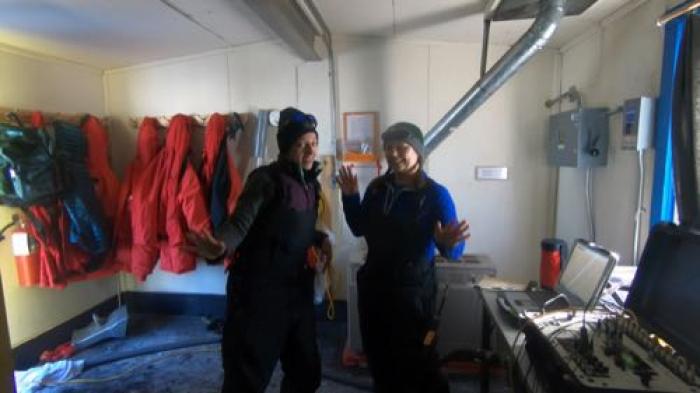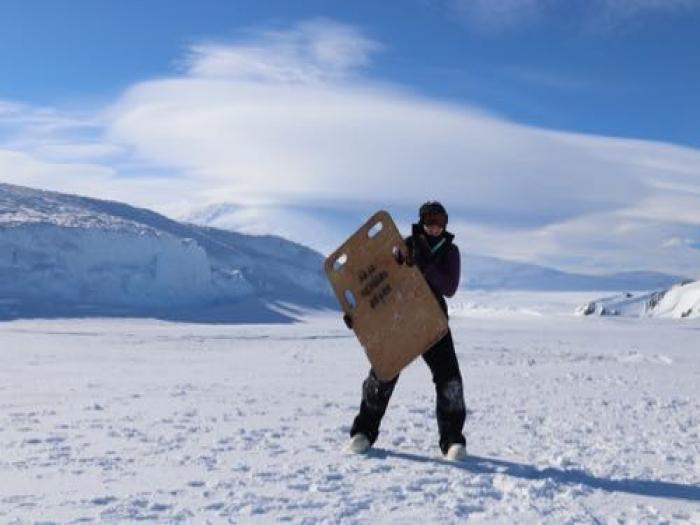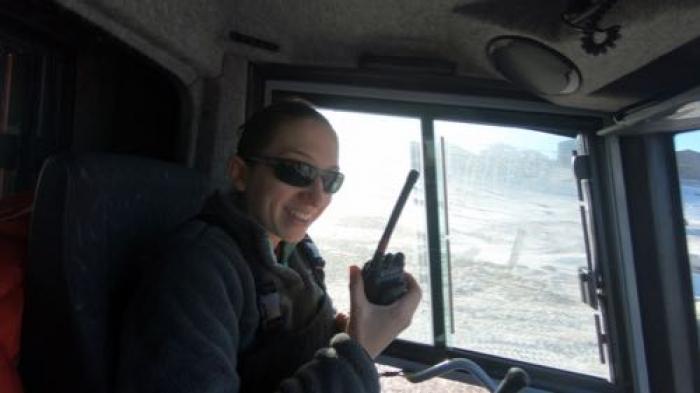The PolarTREC Field Experience

I am honored that I get to share my field experience with so many individuals. Not a day has gone by since my return that I have not had a question about my expedition and I love the range of questions I receive. Honestly, I may have never really considered how many people are in my social network before this opportunity.
Working with the Growing Up on Ice team in Antarctica was an amazing experience. One of the greatest attributes I witnessed while being a member of this team was to observe how each individual's' strength was truly valued and applied optimally. It took teamwork to a level I never knew was possible. I learned such an incredible amount because of the talents that each individual brought to the team and shared. I was able to be both a field research scientist and a junior veterinarian assistant. I am excited to be provided with the opportunity to incorporate skills into learning opportunities for my community.
Beyond directly working with my team, my time spent at McMurdo Station also was extremely valuable. A great amount of support staff is required for the station to run efficiently and allow scientists to complete their research. I have found sharing stories of these individuals has had an extreme impact on my community and my students. Specifically, those who may have had a career path in mind, but did not realize how their skills could be applied to so many different fields.

The Importance of Educator/Researcher Collaboration
Before this experience, I did not realize how excited researchers were to collaborate with educators. I met other research teams during my time in Antarctica. Every team was so kind and interested in how their research could be incorporated into classrooms. Being a research scientist consumes a lot of time. Preparation includes grant writing, obtaining permits, procedure development, assembling a team perhaps including people you have never met and/or are not from your institution, and packing. In the field, the focus is on procedures, data collection, troubleshooting, balancing life in the field and at home, the environment, and packing. Once out of the field, there is unpacking, data analysis, returning to and maintaining life and communicating out about the research. The researchers have a lot on their plates but are so excited to share their projects with others. It is important for educators and researchers to collaborate because we need to share our strengths. Educators have the strength to take this incredible information being collected in the field, adapt it, and share it. Researchers really do want their work to be shared and are excited to work with educators to make it happen; collaborating with one another everyone succeeds.

The Science Explained
The Growing Up on Ice Team’s focus question was: How do Weddell pups stay warm? We worked with ten Weddell pups during our project. Five individuals were studied at the Hutton Cliffs location and five at Turtle Rock. Each was named after a type of candy; which we felt represented their personality, ie. Rolo enjoyed rolling around. At Hutton Cliffs, we collected measurements of body size, blubber depth, and collected blood samples. Data will be analyzed to understand the increase of blubber thickness as the pup grows and the change in the ratio of red blood cells, white blood cells, and plasma as the pup develops. Red blood cells are used to carry oxygen, which allows the seals to stay underwater for up to 80 minutes as an adult.
At Turtle Rock, we collected data on the pups' metabolic rates, both in and out of the water, to understand which environment requires more energy from the pup to maintain homeostasis of body temperature. These procedures included placing the Weddell pup into a large chamber in which there was a constant flow of gases in and out of the chamber that was measured. We first placed the pup in the chamber without water and collected data as the pup remained calm, but not sleeping. We then removed the seal while we prepped the chamber for the next condition. Using a water pump we added water from below the sea ice to that chamber. We then again loaded the pup into the chamber. The pup’s head remained above water at all times. The same procedures were followed to measure the amount of oxygen they were consuming. Data will be analyzed comparing in which environment the pups consumed more oxygen. Higher oxygen consumption means the pups were using more energy to stay warm.
Linking PolarTREC to my Classroom
I am focusing on linking this experience to developing lessons incorporating the Next Generation Science Standards, specifically the life science standard, focused on organisms maintaining homeostasis. Our team focus was investigating how the Weddell pups maintain homeostasis of their body temperature in and out of the water. Students will be conducting hands-on investigations on the importance of blubber on maintaining body temperature and we will be analyzing data collected in the field to evaluate how oxygen consumption can be used to measure energy consumption for aerobic organisms.
Post-Expedition Plans
I participated in six weeks of data collection. The team collected data for an additional six weeks. I will return to Cal Poly in early summer to work with Dr. Liwanag to analyze the data that was collected in the field. This will allow me to develop lesson plans incorporating our data.
I have developed wonderful relationships with all the members of my team. The veterinarian team is excited to maintain communication and participate in Skype sessions with my students. They frequently participate in field expeditions which will vary and allow me to share their experiences with my students.
Working with Dr. Liwanag and/or other members of our team, I would like to present at a conference. One possible meeting is the National Science Teachers Association. Given the opportunity, I am interested in sharing our experience, lessons, and the importance of collaborating with research scientists to raise awareness of current research around the world.

Further Outreach Opportunities
I am currently organizing multiple outreach events. Local classrooms that followed my expedition we are setting up times for me to visit and bring ECW gear for students to wear. I am setting up Skype events with non-local classrooms. Many local municipalities are going to wait until the unpredictable New England winter weather breaks to set up events.
*This program is supported by the National Science Foundation under award 1918637. Any opinions, findings, and conclusions or recommendations expressed by this program are those of the PIs and coordinating team, and do not necessarily reflect the views of the National Science Foundation.
| Attachment | Size |
|---|---|
| Download Report705.27 KB | 705.27 KB |
This program is supported by the National Science Foundation. Any opinions, findings, and conclusions or recommendations expressed by this program are those of the PIs and coordinating team, and do not necessarily reflect the views of the National Science Foundation.
